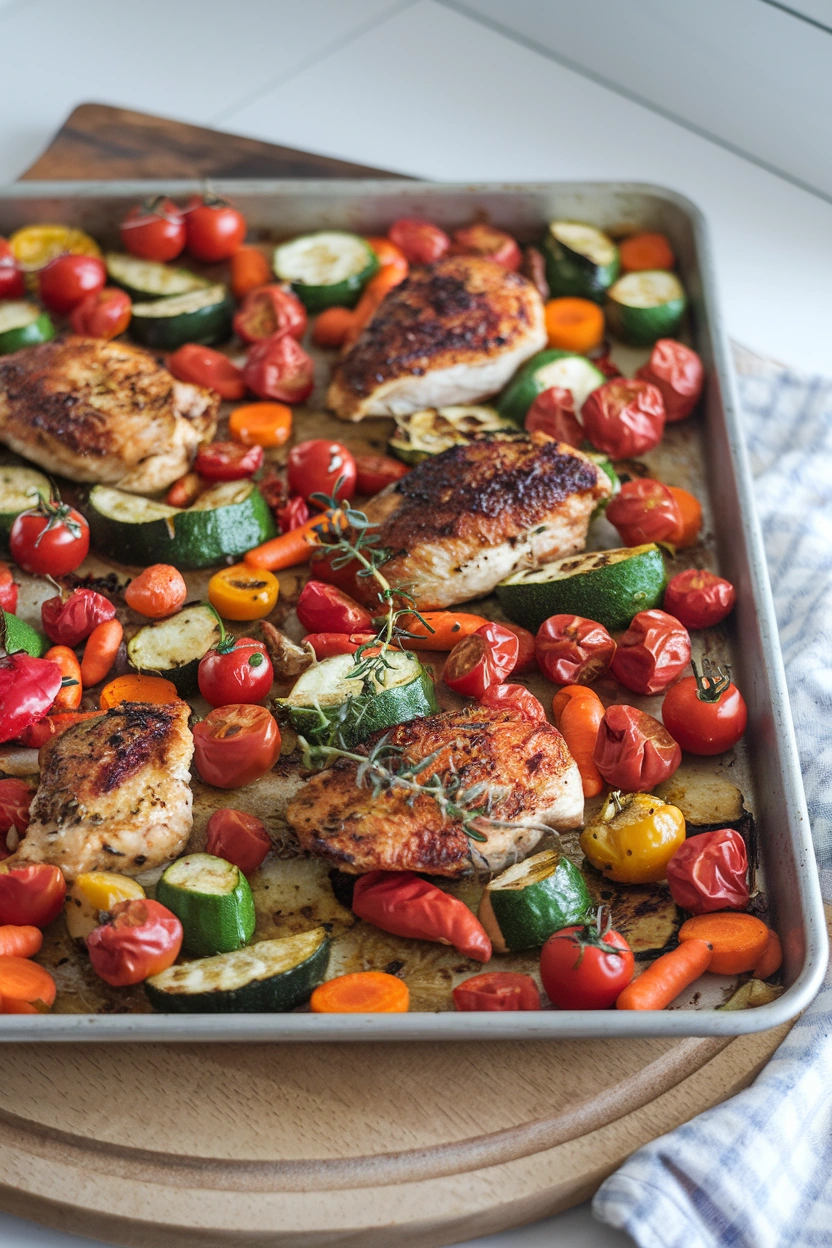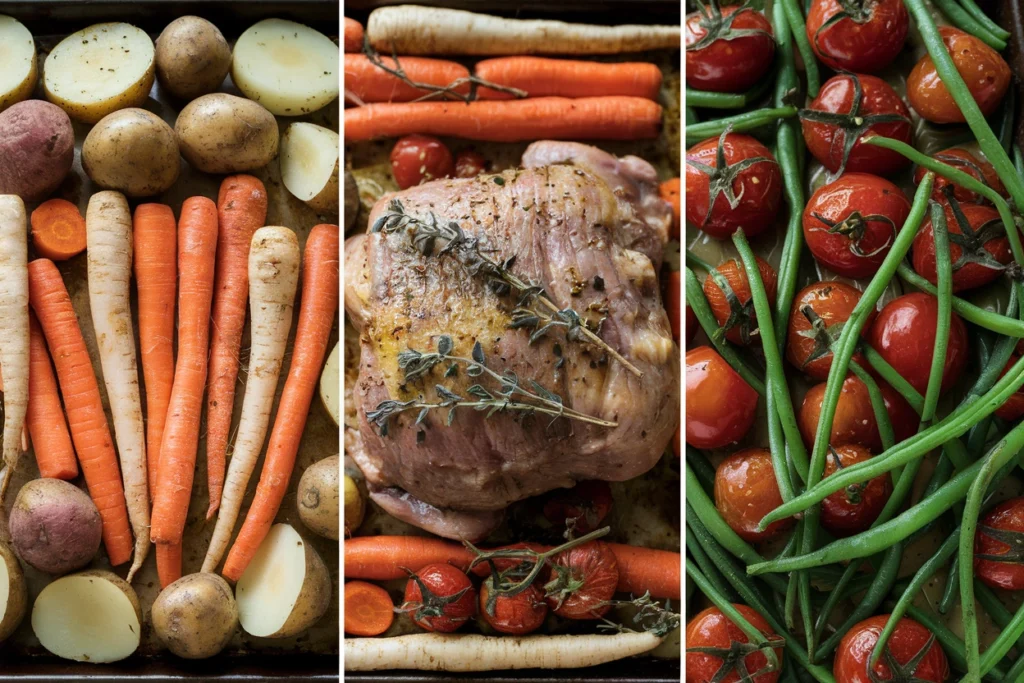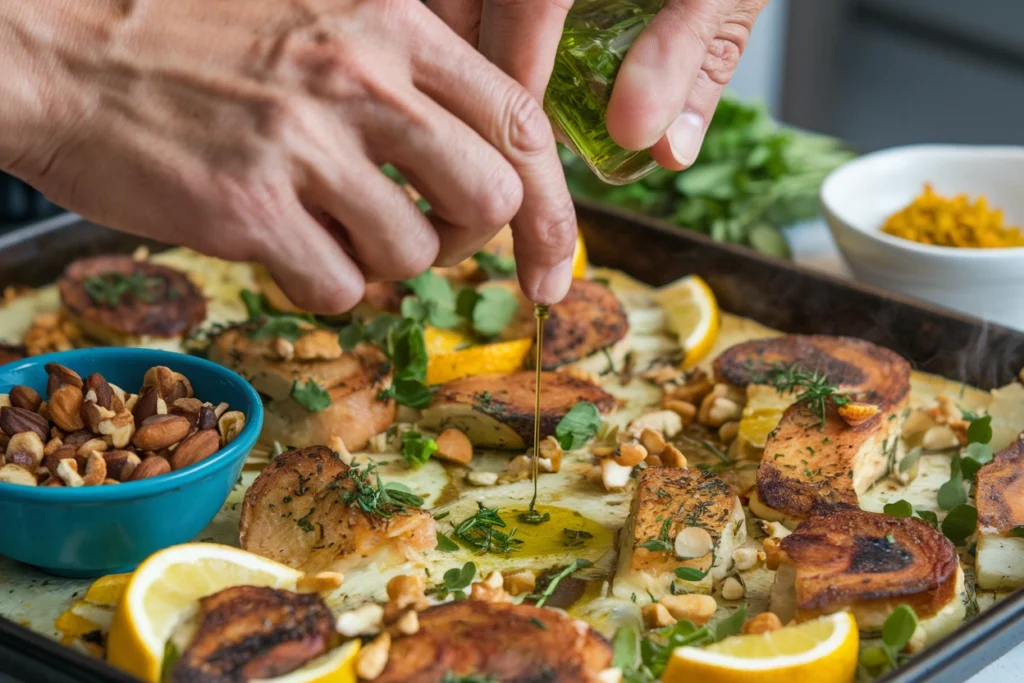The Best Healthy recipes & Workout you will fall in love with. Full of tips and tricks to help you make the best Version of You .

Tabel of Contents
Table of Contents
The culinary world has embraced a game-changing approach to cooking: one pan meals. This method transforms kitchen chaos into streamlined efficiency, answering the modern cook’s call for simplicity without sacrificing flavor. From busy professionals to home cooks seeking practical solutions, one pan meals have become the go-to strategy for creating delicious dinners with minimal cleanup.
The beauty of one pan cooking lies in its versatility and accessibility. Whether you’re roasting a medley of seasonal vegetables with perfectly seasoned chicken or creating a hearty pasta dish that comes together in a single pot, these meals prove that less really can be more. By mastering a few essential techniques and letting your creativity flow, you’ll discover endless possibilities for crafting satisfying, hassle-free meals that will change your weeknight dinner routine.
Understanding One Pan Meals
One pan meals represent a cooking method where all ingredients are prepared in a single cooking vessel. These versatile dishes fall into two main categories:
1. Sheet-Pan Dinners
- Ingredients spread across a rimmed baking sheet
- Perfect for roasting proteins and vegetables together
- Creates delicious caramelization and crispy textures
- Ideal for foods that benefit from dry heat cooking
2. One-Pot Meals
- Cooked in a deep pot or Dutch oven
- Excellent for stews, soups, and braised dishes
- Allows ingredients to meld flavors during cooking
- Best for recipes requiring liquid or sauce components
The beauty of one pan cooking lies in its practical benefits:
- Simplified cleanup with just one dish to wash
- Reduced kitchen clutter during meal preparation
- Enhanced flavor development through ingredient mingling
- Minimal monitoring required during cooking
- Perfect for busy weeknight dinners
- Less energy consumption with single heat source
These efficient cooking methods transform complex recipes into streamlined culinary experiences without sacrificing taste or quality.
Essential Tips for Mastering One Pan Meals
The art of creating perfect one pan meals lies in understanding key techniques that maximize flavor and efficiency. Let’s dive into essential strategies that will elevate your one pan cooking game.

Smart Ingredient Pairing
Creating successful one pan meals starts with matching proteins and vegetables that cook at similar rates. Here are some proven combinations:
- Chicken thighs + root vegetables (45-50 minutes)
- Fish fillets + asparagus (12-15 minutes)
- Pork tenderloin + Brussels sprouts (25-30 minutes)
- Shrimp + bell peppers (8-10 minutes)
Strategic Layering
The arrangement of ingredients on your pan directly impacts cooking results:
- Bottom Layer: Place dense vegetables like potatoes, carrots, and parsnips
- Middle Layer: Add proteins and medium-density vegetables
- Top Layer: Arrange quick-cooking items like cherry tomatoes or leafy greens
Pro tip: Use a cooling rack to elevate proteins, allowing heat circulation for even browning
Seasoning for Success
Different components require distinct seasoning approaches:
- Proteins: Season 30 minutes before cooking
- Root vegetables: Toss with oil and seasonings in a separate bowl
- Fresh herbs: Add woody herbs (rosemary, thyme) during cooking; tender herbs (basil, cilantro) after cooking
- Compound butters: Create flavor pockets by placing herb-infused butter under poultry skin
Cooking Method Mastery
Each cooking technique brings unique benefits to one pan meals:
Roasting (375-425°F)
- Creates caramelization
- Develops deep flavors
- Best for root vegetables and larger cuts of meat
Broiling (500°F+)
- Adds crispy textures
- Creates attractive browning
- Perfect for finishing dishes
Steaming
- Maintains moisture
- Preserves nutrients
- Ideal for delicate proteins
Space Management
Proper ingredient spacing ensures optimal results:
- Leave ½ inch between pieces
- Avoid overlapping ingredients
- Use multiple pans when serving 4+ people
- Consider pan size based on ingredient volume
Temperature Control
Master your oven’s behavior for consistent results:
Temperature Guidelines
- Proteins + hardy vegetables: 400°F
- Delicate fish + vegetables: 375°F
- Quick-cooking items: 425°F
Oven Tip: Rotate pan halfway through cooking for even heat distribution
Heat Zones
- Back of oven: typically hotter
- Bottom rack: best for browning
- Middle rack: ideal for even cooking
Creative Combinations in One Pan Meals
Let your culinary creativity shine with unexpected ingredient pairings in your one pan meals. Mix proteins with ancient grains for a nutritious twist – think salmon fillets nestled on a bed of quinoa or chicken thighs with wild rice.
Exciting protein combinations to try:
- Duck breast with pearl couscous
- Shrimp with orzo pasta
- Pork tenderloin with farro
Embrace seasonal vegetables to add color, texture, and peak-season flavors:
- Spring: Asparagus, peas, artichokes
- Summer: Zucchini, cherry tomatoes, corn
- Fall: Brussels sprouts, butternut squash, mushrooms
- Winter: Parsnips, turnips, sweet potatoes
Create globally-inspired dishes by incorporating regional flavors:
- Mediterranean: Olives, capers, sundried tomatoes
- Asian: Bok choy, water chestnuts, snap peas
- Mexican: Bell peppers, black beans, corn
These creative combinations transform simple one pan meals into exciting culinary adventures while maintaining the convenience of minimal cleanup.
Finishing Touches for Elevation
Transform your one pan meals from simple to spectacular with these professional garnishing techniques:

1. Fresh Herbs
- Sprinkle chopped basil, cilantro, or parsley just before serving
- Add whole mint or sage leaves for an elegant touch
- Create herb oil drizzles by blending herbs with olive oil
2. Flavorful Sauces
- Drizzle homemade chimichurri or pesto
- Add a splash of lemon butter sauce
- Create pan sauce from cooking juices
3. Texture Elements
- Scatter toasted nuts or seeds
- Add crispy fried shallots
- Sprinkle breadcrumbs seasoned with herbs
4. Color Enhancers
- Dust with smoked paprika
- Garnish with microgreens
- Add citrus zest or wedges
Pro Tip: Create height by stacking ingredients strategically and place garnishes at varying angles for visual interest. Use negative space on the serving dish to make your one pan creation stand out.
A well-garnished dish engages multiple senses – the visual appeal builds anticipation while complementary flavors enhance the eating experience. Consider garnishes that contrast with your main ingredients in both color and texture for maximum impact.
Conclusion
Mastering one pan meals transforms everyday cooking into an effortless art. These versatile dishes prove that simplicity and flavor can coexist beautifully in your kitchen. The beauty of one pan cooking lies in its ability to create stunning meals while keeping cleanup minimal and prep time short.
By applying the techniques shared in this guide, you’ll discover endless possibilities for creating delicious, nutritious meals that fit your busy lifestyle. From sheet pan dinners to one-pot wonders, these simplified cooking methods open doors to culinary creativity without the complexity of traditional cooking.
Your journey to becoming a one pan meal expert starts here – embrace the simplicity, savor the flavors, and enjoy the freedom of hassle-free cooking.
FAQs (Frequently Asked Questions)
What are one pan meals and why are they popular?
One pan meals are dishes that can be prepared using only one cooking vessel, typically either a sheet pan or a pot. Their popularity has surged due to their convenience, allowing for easy cleanup and minimal prep time, making them ideal for busy lifestyles.
What are the two main types of one pan meals?
The two main types of one pan meals are sheet-pan dinners, which involve roasting ingredients on a baking sheet, and one-pot meals, where all ingredients are cooked together in a single pot. Both methods simplify cooking and cleanup.
What are some essential tips for mastering one pan meals?
Key tips include pairing proteins with vegetables that cook evenly, layering ingredients properly on the pan, seasoning effectively, utilizing various cooking methods like roasting or broiling, managing space to avoid overcrowding, and understanding your oven’s temperature accuracy.
How can I enhance the flavor of my one pan meals?
To enhance flavor in your one pan meals, consider using fresh herbs and spices during seasoning. You can also experiment with ingredient combinations and try different cooking methods to bring out unique tastes in your dishes.
Can I use seasonal vegetables in my one pan meals?
Absolutely! Incorporating seasonal vegetables into your one pan meals not only adds freshness but also encourages creativity. Pairing these veggies with different proteins or grains can lead to delicious and unique flavor profiles.
What finishing touches can elevate my one pan dishes?
To elevate your one pan dishes, consider garnishing with fresh herbs or drizzling flavorful sauces before serving. Presentation techniques can also enhance visual appeal, making your meal more inviting.




